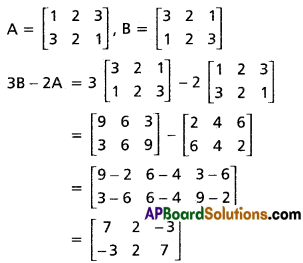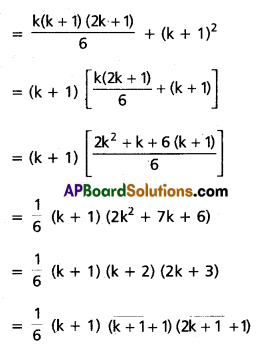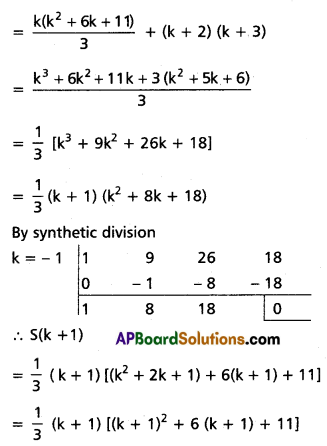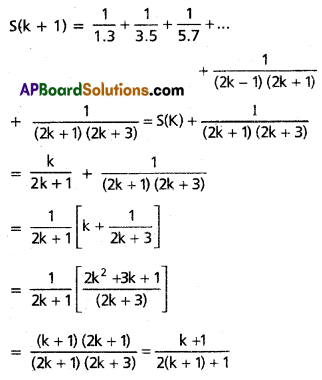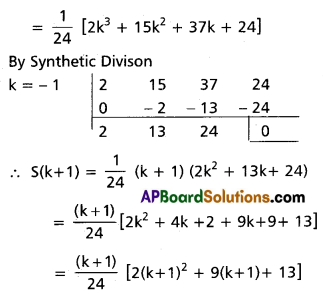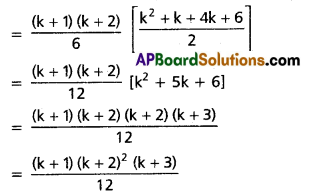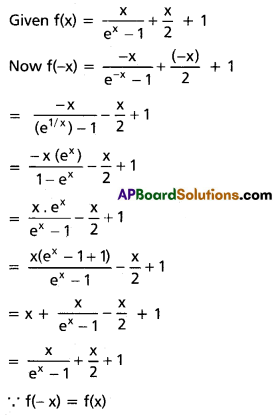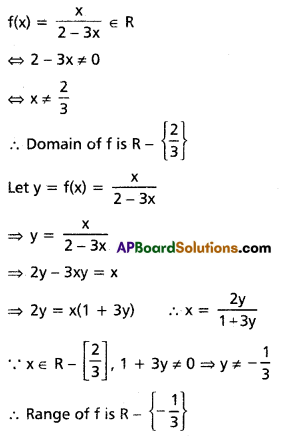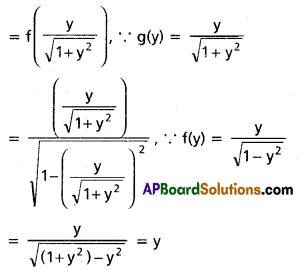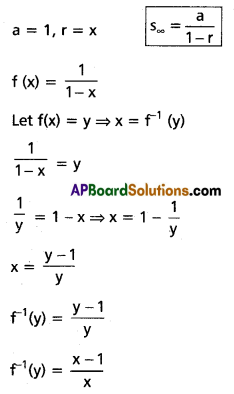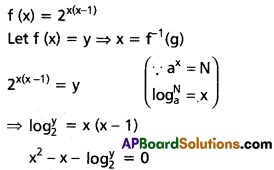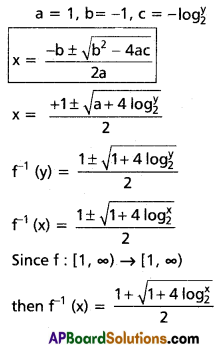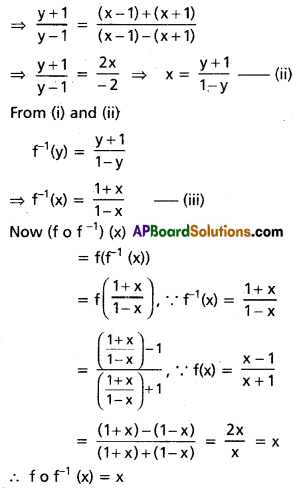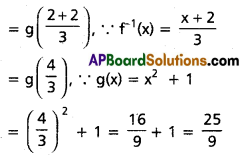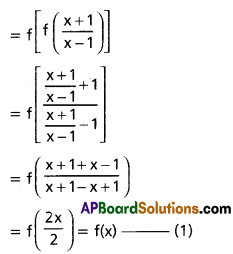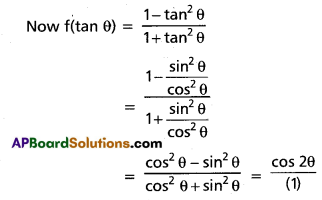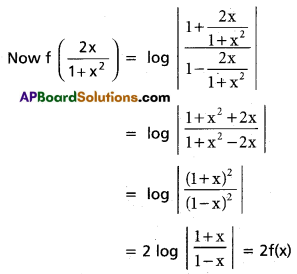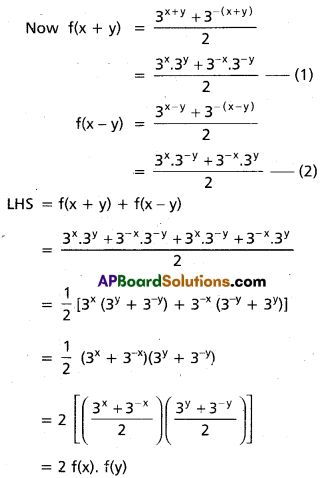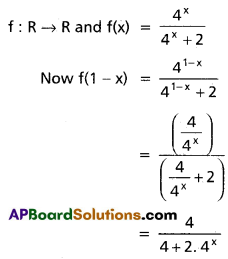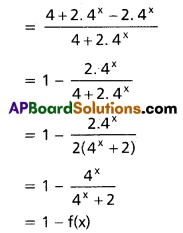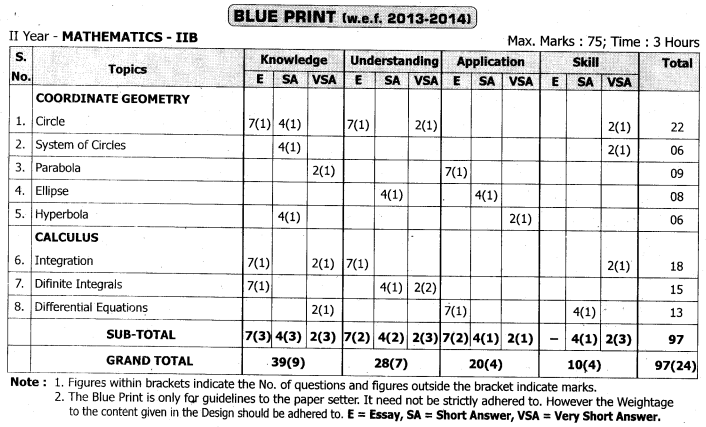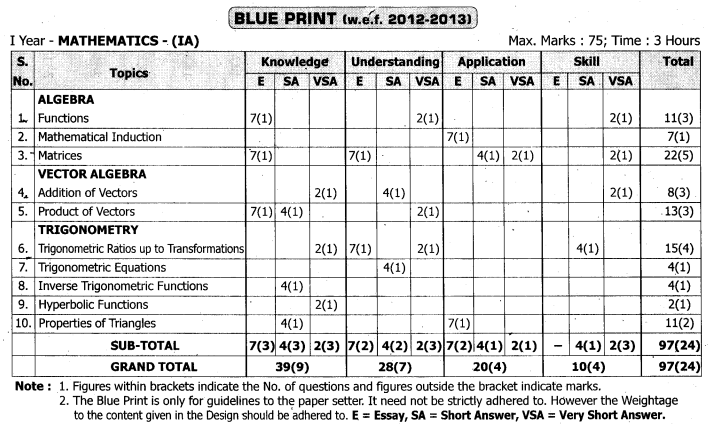Practicing the Intermediate 1st Year Maths 1A Textbook Solutions Inter 1st Year Maths 1A Matrices Solutions Exercise 3(a) will help students to clear their doubts quickly.
Intermediate 1st Year Maths 1A Matrices Solutions Exercise 3(a)
I.
Question 1.
Write the following as a single matrix.
(i) \(\left[\begin{array}{lll}
2 & 1 & 3
\end{array}\right]+\left[\begin{array}{lll}
1 & 0 & 0
\end{array}\right]\)
(ii) \(\left[\begin{array}{ccc}
3 & 9 & 0 \\
1 & 8 & -2
\end{array}\right]+\left[\begin{array}{ccc}
4 & 0 & 2 \\
7 & 1 & 4
\end{array}\right]\)
(iii) \(\left[\begin{array}{c}
0 \\
1 \\
-1
\end{array}\right]+\left[\begin{array}{l}
1 \\
1 \\
1
\end{array}\right]\)
(iv) \(\left[\begin{array}{cc}
-1 & 2 \\
2 & -2 \\
3 & 1
\end{array}\right]-\left[\begin{array}{cc}
0 & 1 \\
-1 & 0 \\
-2 & 1
\end{array}\right]\)
Solution:
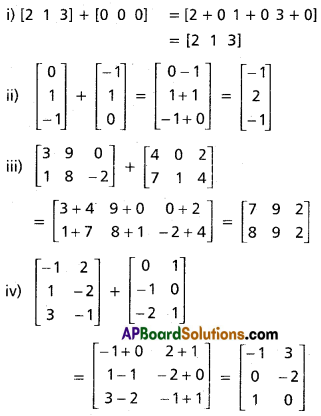
Question 2.
If A = \(\left[\begin{array}{cc}
-1 & 3 \\
4 & 2
\end{array}\right]\), B = \(\left[\begin{array}{cc}
2 & 1 \\
3 & -5
\end{array}\right]\), X = \(\left[\begin{array}{ll}
x_{1} & x_{2} \\
x_{3} & x_{4}
\end{array}\right]\) and A + B = X, then find the values of x1, x2, x3 and x4.
Solution:
A + B = X
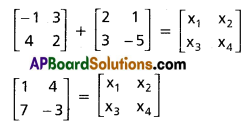
∴ x1 = 1, x2 = 4, x3 = 7, x4 = -3
![]()
Question 3.
If A = \(\left[\begin{array}{ccc}
-1 & -2 & 3 \\
1 & 2 & 4 \\
2 & -1 & 3
\end{array}\right]\), B = \(\left[\begin{array}{ccc}
1 & -2 & 5 \\
0 & -2 & 2 \\
1 & 2 & -3
\end{array}\right]\) and C = \(\left[\begin{array}{ccc}
-2 & 1 & 2 \\
1 & 1 & 2 \\
2 & 0 & 1
\end{array}\right]\) then find A + B + C.
Solution:
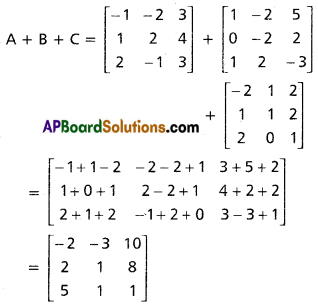
Question 4.
If A = \(\left[\begin{array}{ccc}
3 & 2 & -1 \\
2 & -2 & 0 \\
1 & 3 & 1
\end{array}\right]\), B = \(\left[\begin{array}{ccc}
-3 & -1 & 0 \\
2 & 1 & 3 \\
4 & -1 & 2
\end{array}\right]\) and X = A + B then find X.
Solution:
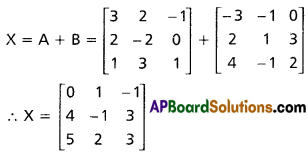
Question 5.
If \(\left[\begin{array}{cc}
x-3 & 2 y-8 \\
z+2 & 6
\end{array}\right]=\left[\begin{array}{cc}
5 & 2 \\
-2 & a-4
\end{array}\right]\) then find the values of x, y, z and a.
Solution:
Given \(\left[\begin{array}{cc}
x-3 & 2 y-8 \\
z+2 & 6
\end{array}\right]=\left[\begin{array}{cc}
5 & 2 \\
-2 & a-4
\end{array}\right]\)
∴ x – 3 = 5 ⇒ x = 3 + 5 = 8
2y – 8 = 2 ⇒ 2y = 8 + 2 = 10 ⇒ y = 5
z + 2 = -2 ⇒ z = -2 – 2 = -4
a – 4 = 6 ⇒ a = 4 + 6 = 10
II.
Question 1.
If \(\left[\begin{array}{ccc}
x-1 & 2 & 5-y \\
0 & z-1 & 7 \\
1 & 0 & a-5
\end{array}\right]=\left[\begin{array}{ccc}
1 & 2 & 3 \\
0 & 4 & 7 \\
1 & 0 & 0
\end{array}\right]\) then find the values of x, y, z and a.
Solution:
Given \(\left[\begin{array}{ccc}
x-1 & 2 & 5-y \\
0 & z-1 & 7 \\
1 & 0 & a-5
\end{array}\right]=\left[\begin{array}{ccc}
1 & 2 & 3 \\
0 & 4 & 7 \\
1 & 0 & 0
\end{array}\right]\)
∴ x – 1 = 1 ⇒ x = 1 + 1 = 2
5 – y = 3 ⇒ y = 5 – 3 = 2
z – 1 = 4 ⇒ z = 4 + 1 = 5
a – 5 = 0 ⇒ a = 5
![]()
Question 2.
Find the trace of \(\left[\begin{array}{ccc}
1 & 3 & -5 \\
2 & -1 & 5 \\
1 & 0 & 1
\end{array}\right]\)
Solution:
Trace of \(\left[\begin{array}{ccc}
1 & 3 & -5 \\
2 & -1 & 5 \\
1 & 0 & 1
\end{array}\right]\) = Sum of the diagonal elements
= 1 – 1 + 1
= 1
Question 3.
If A = \(\left[\begin{array}{rrr}
0 & 1 & 2 \\
2 & 3 & 4 \\
4 & 5 & -6
\end{array}\right]\) and B = \(\left[\begin{array}{ccc}
-1 & 2 & 3 \\
0 & 1 & 0 \\
0 & 0 & -1
\end{array}\right]\) find B – A and 4A – 5B.
Solution:


![]()
Question 4.
If A = \(\left[\begin{array}{lll}
1 & 2 & 3 \\
3 & 2 & 1
\end{array}\right]\) and B = \(\left[\begin{array}{lll}
3 & 2 & 1 \\
1 & 2 & 3
\end{array}\right]\) find 3B – 2A.
Solution:
